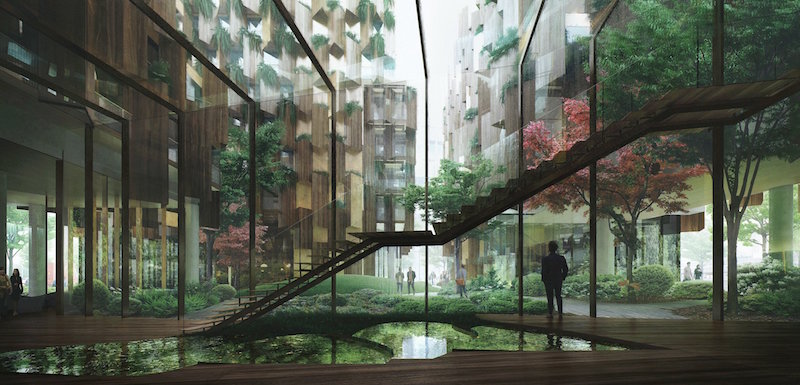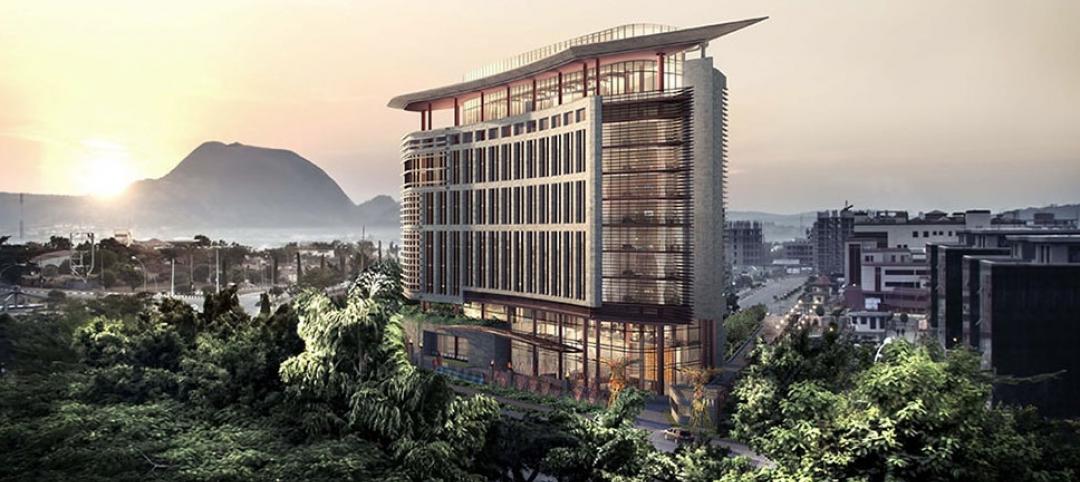Designing buildings with facades that are covered in plants is becoming one of the most popular ways for architects to incorporate more greenery into urban landscapes. Agora Garden, Garden Hill, The Plant, and the forest cities concept are just a few of the recent designs to put an emphasis on integrated greenery. Recently, a new plant-covered hotel design, courtesy of Kengo Kuma, was added to that transmogrifying list.
According to Dezeen, the luxury hotel, dubbed 1Hotel, will feature a façade composed of wooden blocks with a triangular profile that will be arranged vertically across the exterior of the building. Gaps will be left for plants to grow between and metal panels will be included in some spaces to reflect sunlight. Balconies will be found behind the wooden blocks on the side of the building facing the street.
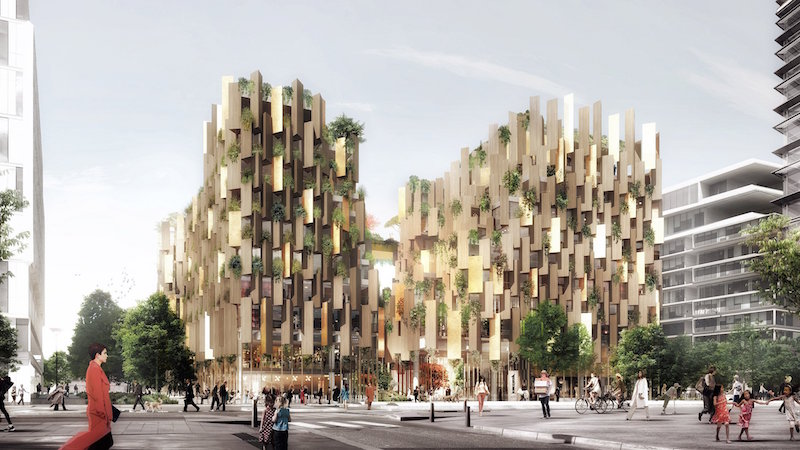 Rendering courtesy of Luxigon / Mir and Kengo Kuma Associates.
Rendering courtesy of Luxigon / Mir and Kengo Kuma Associates.
A large garden will be included at the center of the hotel complex, set between the main hotel building and the separate youth hostel. The hotel’s walls will be staggered around the central garden to create a series of large terraces and a swimming pool.
 Rendering courtesy of Luxigon / Mir and Kengo Kuma Associates.
Rendering courtesy of Luxigon / Mir and Kengo Kuma Associates.
The hotels amenities will include sports facilities, business incubators to the gardens, a restaurant, a co-working space, and, unsurprisingly, a roof terrace.
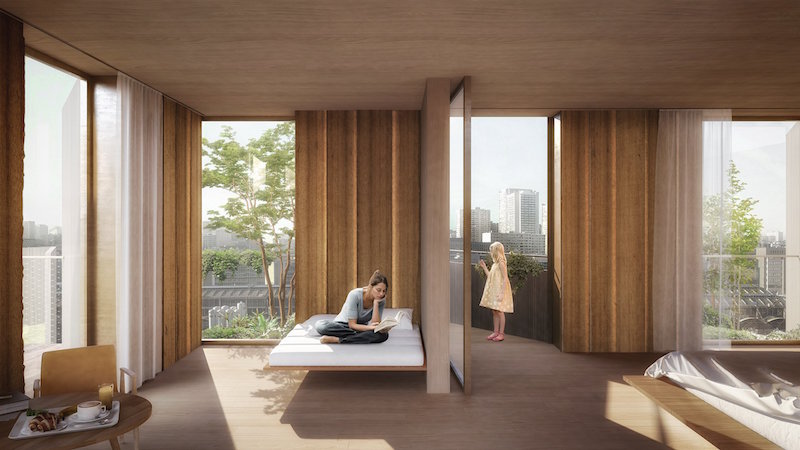 Rendering courtesy of Luxigon / Mir and Kengo Kuma Associates.
Rendering courtesy of Luxigon / Mir and Kengo Kuma Associates.
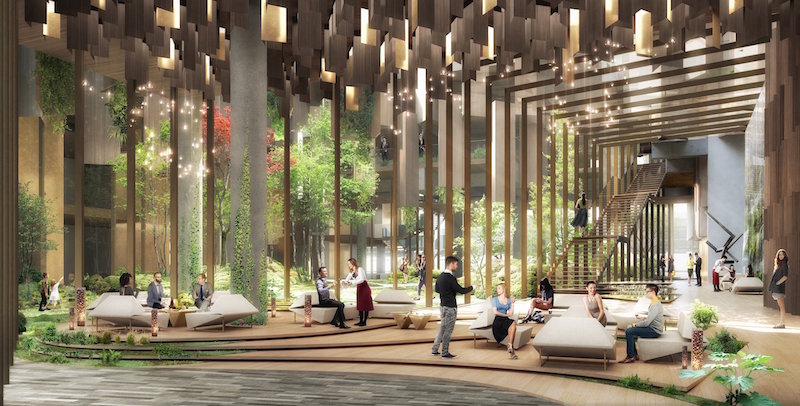 Rendering courtesy of Luxigon / Mir and Kengo Kuma Associates.
Rendering courtesy of Luxigon / Mir and Kengo Kuma Associates.
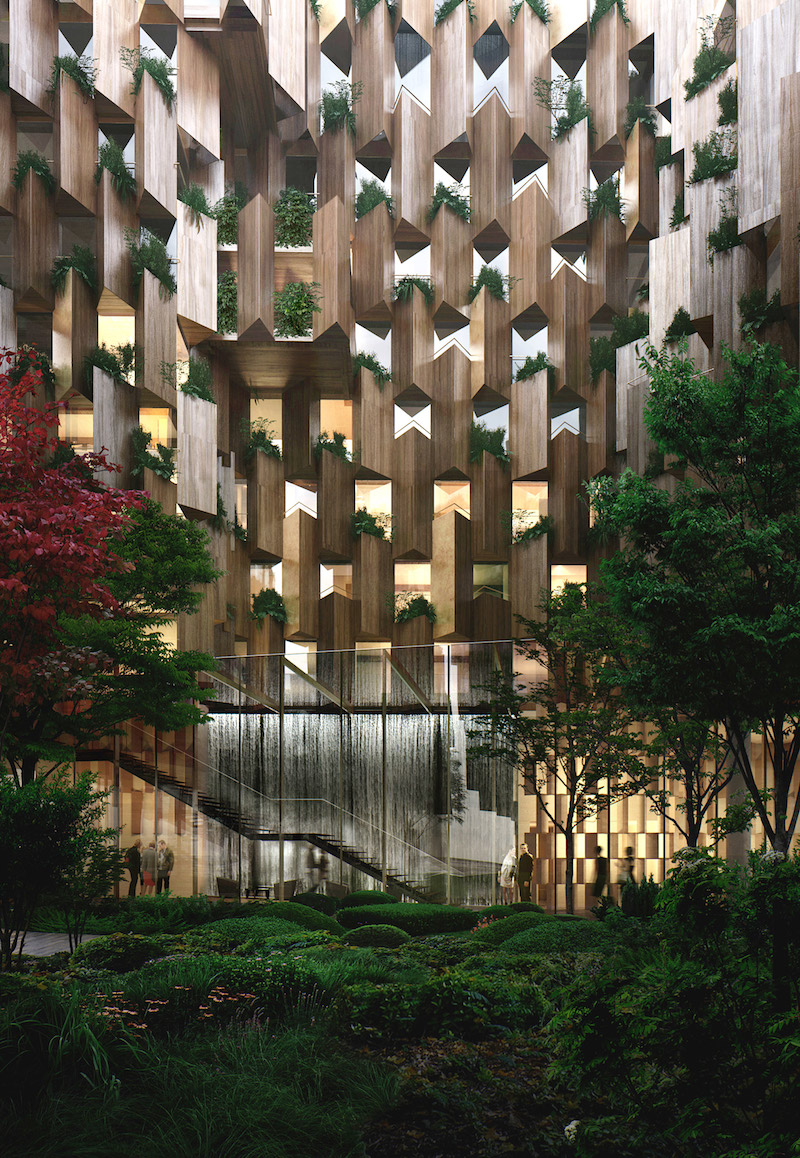 Rendering courtesy of Luxigon / Mir and Kengo Kuma Associates.
Rendering courtesy of Luxigon / Mir and Kengo Kuma Associates.
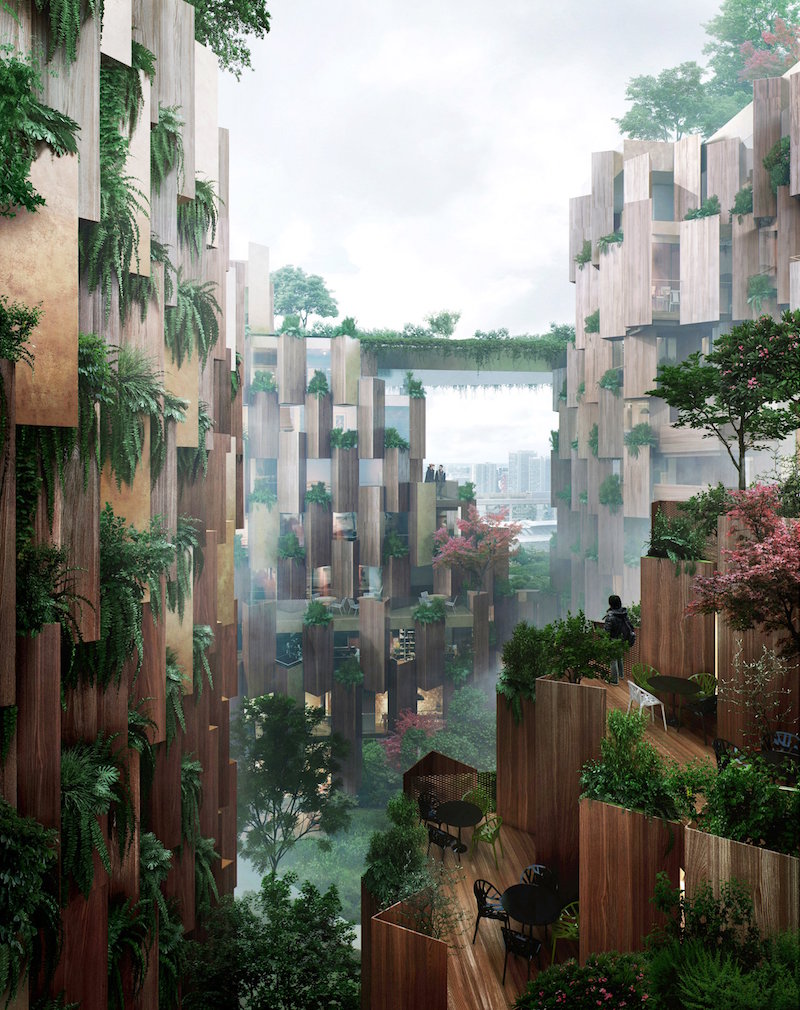 Rendering courtesy of Luxigon / Mir and Kengo Kuma Associates.
Rendering courtesy of Luxigon / Mir and Kengo Kuma Associates.
 Rendering courtesy of Luxigon / Mir and Kengo Kuma Associates.
Rendering courtesy of Luxigon / Mir and Kengo Kuma Associates.
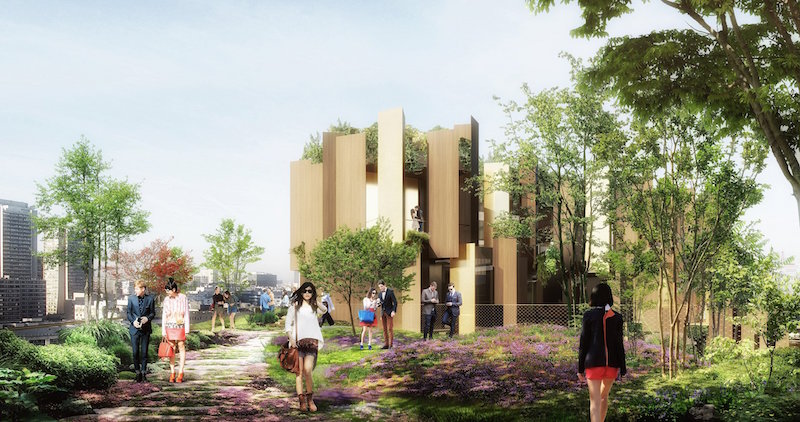 Rendering courtesy of Luxigon / Mir and Kengo Kuma Associates.
Rendering courtesy of Luxigon / Mir and Kengo Kuma Associates.
Related Stories
| Aug 14, 2013
Green Building Report [2013 Giants 300 Report]
Building Design+Construction's rankings of the nation's largest green design and construction firms.
| Jul 31, 2013
Hotel, retail sectors bright spots of sluggish nonresidential construction market
A disappointing recovery of the U.S. economy is limiting need for new nonresidential building activity, said AIA Chief Economist, Kermit Baker in the AIA's semi-annual Consensus Construction Forecast, released today. As a result, AIA reduced its projections for 2013 spending to 2.3%.
| Jul 22, 2013
Top Hotel Construction Firms [2013 Giants 300 Report]
Manhattan Construction, Structure Tone, Lend Lease top Building Design+Construction's 2013 ranking of the largest hotel contractors and construction management firms in the U.S.
| Jul 22, 2013
Top Hotel Engineering Firms [2013 Giants 300 Report]
AECOM, Parsons Brinckerhoff, Buro Happold top Building Design+Construction's 2013 ranking of the largest hotel engineering and engineering/architecture firms in the U.S.
| Jul 22, 2013
Top Hotel Architecture Firms [2013 Giants 300 Report]
Gensler, WATG, HKS top Building Design+Construction's 2013 ranking of the largest hotel architecture and architecture/engineering firms in the U.S.
| Jul 22, 2013
Hotel business continues to shine [2013 Giants 300 Report]
Despite some economic stressors, hotel operating fundamentals are poised to remain strong in 2013.
| Jul 19, 2013
Reconstruction Sector Construction Firms [2013 Giants 300 Report]
Structure Tone, DPR, Gilbane top Building Design+Construction's 2013 ranking of the largest reconstruction contractor and construction management firms in the U.S.
| Jul 19, 2013
Reconstruction Sector Engineering Firms [2013 Giants 300 Report]
URS, STV, Wiss Janney Elstner top Building Design+Construction's 2013 ranking of the largest reconstruction engineering and engineering/architecture firms in the U.S.
| Jul 19, 2013
Reconstruction Sector Architecture Firms [2013 Giants 300 Report]
Stantec, HOK, HDR top Building Design+Construction's 2013 ranking of the largest reconstruction architecture and architecture/engineering firms in the U.S.
| Jul 19, 2013
Renovation, adaptive reuse stay strong, providing fertile ground for growth [2013 Giants 300 Report]
Increasingly, owners recognize that existing buildings represent a considerable resource in embodied energy, which can often be leveraged for lower front-end costs and a faster turnaround than new construction.


